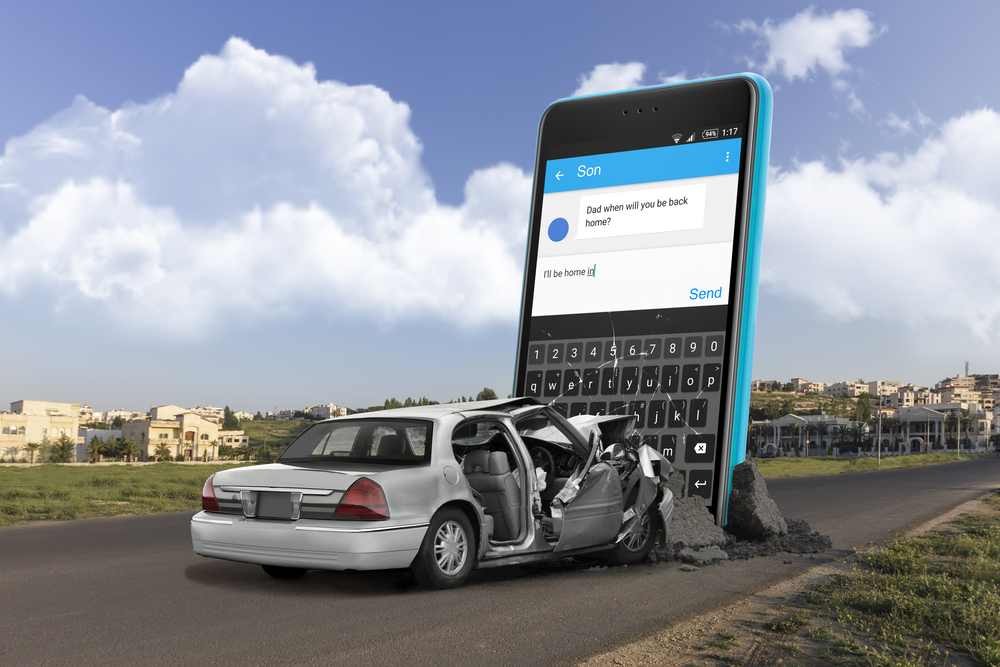25th March 2022 saw a change in the law in England, Scotland and Wales. And, though it arrived with barely a whimper, it could have a huge impact on thousands of workers who drive on company business every year. If you use your phone whilst driving, read on, this could save your licence.
The law has changed
It’s been an offence to use a hand held mobile phone or similar devices for “interactive communication” (unless it is a genuine emergency 999/112 call) whilst driving since 2003. In 2020 according to Reported road accidents, vehicles and casualties tables for Great Britain – GOV.UK (www.gov.uk) there were 516 road traffic accidents in England where the use of mobile phones was a contributory factor; this included 114 serious injuries and 17 fatalities. In July 2021 Ion Onut was jailed after he killed 3 people when he crashed his HGV whilst looking at dating sites on his phone. Shocking, but sadly if you search you can find many similar examples where the use of phones contributed to fatalities.
But the law was muddied in 2019 thanks to a legal case DPP v. Barreto (2019) where it was held that the use of a phone to film an accident whilst driving was not “interactive communication” – madness, maybe; a distraction, definitely, but not at that time an offence in the eyes of that Judge. But before you whip your phone out to upload a “tik tok” video as you drive, the law has changed. The loophole has been closed and the law tightened considerably thanks to the Road Vehicles (Construction and Use) (Amendment) (No. 2) Regulations 2022. And OK I admit at 48, tik tok is beyond me and I’m repeating phrases I hear “the young ones” saying!
So what does this mean?
In short, don’t touch that phone or you risk a heavy penalty. Don’t hold it and use it as a clock, a Sat Nav, a way of playing space invaders, don’t order a pizza, don’t take a photo, don’t film a short documentary, don’t check your messages, write a light opera, don’t even unlock the thing. And don’t use the excuse “it was in flight mode officer” because that doesn’t matter. The law covers “any device which is capable of interactive communication even if that functionality is not enabled at the time”. For the full list of “don’ts” see the statutory instrument at The Road Vehicles (Construction and Use) (Amendment) (No. 2) Regulations 2022 (legislation.gov.uk). There are a lot more “don’ts” than “do’s” too!
If you are panicking about paying for that morning coffee at the drive through, fear not. There is an exemption in the new law which allows you to use the phone to make a contactless payment, for goods or services at the same time, or after, the payment is made and if the vehicle is stationary. I’m not a legal eagle but here I think we mean stopping the car at the payment window of a drive through or a toll booth and making a payment is OK, ordering in advance or topping up your app as you drive is very much not OK! That doesn’t mean it’s OK to pop on that app at the traffic lights though. If you review the information Using a phone, sat nav or other device when driving – GOV.UK (www.gov.uk) you will see that the law applies if you are stopped at lights or in a traffic jam. It’s also an offence if you are on your phone whilst supervising a learner driver!
So what does this mean, if anything, for employers?
Actually, lots, as since 2003 it has been an offence to “cause or permit any other person to drive a motor vehicle…while…that other person is using a hand-held mobile telephone”. The HSE have a new micro site at https://www.hse.gov.uk/roadsafety/ which is of use here. It emphasises the duty employers have to ensure the safety of people driving for work, to have a policy on mobile phones, to train workers. And to ensure that if needed hands free equipment is provided and used sparingly. That means reassessing driving risks and deciding if it’s necessary to actually use phones whilst driving. And updating policies accordingly making it very clear that phones are not to be picked up whilst driving.
Managers must also be made very aware that if they encourage or pressure employees to use phones in a manner which causes them to break the law they could be prosecuted for “causing or permitting” the offence. Many companies are going further however, and are adopting a policy where phones are off whilst in the car. However, if the phone is part of a safe system of work for lone working alternative means of ensuring safety may need due consideration. Whatever your organisation decides, training must be rolled out to employees, self-employed drivers and managers alike to ensure that your organisational expectations are clear.
Final note
Ultimately, reaching for that phone could result in a driving ban. You could alternatively receive 6 penalty points and a fine and drivers who have passed their test within 2 years will lose their licence. Enjoy the peace and put it away – it’s a car, not an office.

Zoe Neasham
RRC Lead Tutor
